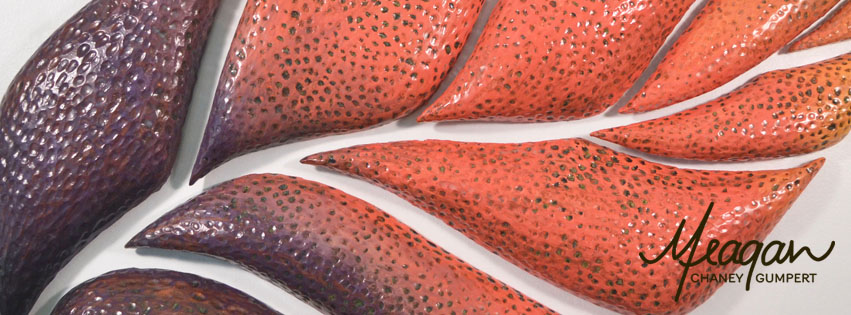I had the pleasure of meeting Martina while we were teaching at Arrowmont School of Arts and Crafts this past August. Though I've know her work for awhile, it's always great to meet the maker behind the handmade. Instantly, I was won over by her easy going, but professional nature and enjoyed conversations we had in and out of the studio all week.
Born in Montreal,
Canada, Martina Lantin received her Bachelor of Art from Earlham College (1996)
and her Master of Fine Art from NSCAD University (2009). She has been an artist in residence at
Baltimore Clayworks in Baltimore, MD and Arrowmont School of Art and Craft in Gatlinburg,TN. Currently, Martina is a professor at
Marlboro College in Marlboro, VT.
Selected as an
Emerging Artist by Ceramics Monthly (2002), her work has been recognized in
numerous juried and invitational exhibitions. In 2010 Martina
was award an Individual Artist Grant by the Tennessee Arts Commission. She has also published articles in both Studio Potter and Pottery Making Illustrated.
Here are the low fire glazes and application technique Martina is sharing with us today:
WOODY HUGHES BASE GLAZE – CONE 04 – good
with colorants
Gerstley Borate
|
26
|
Lithium
Carbonate
|
4
|
Frit 3124
|
30
|
NephalineSyenite
|
20
|
EPK
|
10
|
Flint
|
10
|
Colorants can be
metallic oxides or carbonates or mason stains, singly or in combination.
Colors in the
image:
Blue green: 2% copper carbonate and 3% deep orchid stain
Violet: 5% orchid stain and 1.5% rutile
OPAQUE GLOSS: (rated for cone 015 – as an over-glaze enamel)
Frit 3134
|
36.4
|
Pemco ‘P-25’
(frit 3269)
|
55.6
|
EPK
|
8
|
Add tin
|
10
|
Colorants –
stains or oxides. Do your own tests to
develop your palette – start with 2 – 10 %
First, the Opaque Gloss is slip trailed onto the piece (in the example photo - the colors you see are from the slip decoration applied prior to bisquing). Spaces in the design motif can be filled in with colored versions of the Woody Hughes base (brush application works best for filling in areas with color). Woody Hughes base glaze is applied to cone 05 bisqueware, ideally poured or dipped.

You can also play with waxing over the colored Woody's glazes or not – depending on the fluidity desired. The clear Woody's Base glaze can be very thin for dipping, however when the stains or oxides are added for the colored glazes, thicker is better for brushing purposes.
Martina then fires to cone 03 using a kiln sitter or cone 04 when using a computer program with cone 04 on the program and 25 minute hold at the end.
So, there you have it! Martina let us in on some of the secrets of how she gets such beautiful, fluid results in her work!
Hope you're having a wonderful Friday!
Meagan
First, the Opaque Gloss is slip trailed onto the piece (in the example photo - the colors you see are from the slip decoration applied prior to bisquing). Spaces in the design motif can be filled in with colored versions of the Woody Hughes base (brush application works best for filling in areas with color). Woody Hughes base glaze is applied to cone 05 bisqueware, ideally poured or dipped.

You can also play with waxing over the colored Woody's glazes or not – depending on the fluidity desired. The clear Woody's Base glaze can be very thin for dipping, however when the stains or oxides are added for the colored glazes, thicker is better for brushing purposes.
Martina then fires to cone 03 using a kiln sitter or cone 04 when using a computer program with cone 04 on the program and 25 minute hold at the end.
So, there you have it! Martina let us in on some of the secrets of how she gets such beautiful, fluid results in her work!
Hope you're having a wonderful Friday!
Meagan



